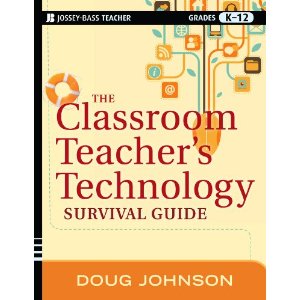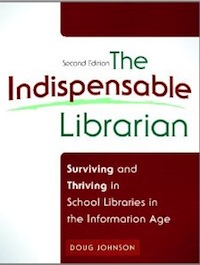stone soup mentality
A stone soup mentality
Head for the Edge, November 1998
I know it is difficult to believe, but every once in a while even a person as sweet and lovable and intelligent and modest as I am gets raked over the coals. That’s what happen awhile back when I attended a meeting of high school teachers who were not happy that our schools are adding our records to the public library’s on-line catalog so that we could do interlibrary loan more easily. Their concerns included:
- What incentives will the little schools around have to maintain their libraries when they know they can just use our books?
- What if someone from another school checks out a book when I need it?
- Who pays for materials that are lost or damaged? How will we collect for them?
- Why should our school’s media specialist take time away from our students to circulate materials outside the school?
- What’s in this interlibrary loan business for us? As public library patrons, my students and I can already borrow extensively from libraries throughout the state. Why should we share our collections?
- Didn’t this community’s citizens spend their money on materials for their children?
Pretty good questions, huh?
One reason questions like this get asked is that many of us operate from what Stephen Covey in his book The Seven Habits of Highly Effective People calls the “Scarcity Mentality” when it comes to resources. People using that point of view see resources as a single pie. And of course the more people eating the pie, the smaller slice each person gets.
Instead we should be operating from what Covey calls the “Abundance Mentality.” Rather than regarding resources as a pie, we should look at them as a big stew to which everyone contributes. Remember the old folktale “Stone Soup?” The crafty soldiers tricked the peasants of the village into adding single ingredients to one big pot until they had made a meal better than any of them alone could have concocted. And everyone enjoyed the feast. (Sort of reminds me of potluck dinners, too.)
As school media specialists, we need to begin to adopt the “stone soup” approach to collection development and interlibrary loan. Our building collections should not only be regarded as a single entity, but also as a unique part of a larger regional or state collection. The digitization of our catalogs and intra- and inter-institutional networking of our schools and libraries are making remote, comprehensive access not just possible, but inevitable. Physically and technically creating these connections seems less a challenge than building, say the Great Pyramid of Kofu or the Trans-Continental Railroad. Unfortunately it does seem that for most human projects, the physical barriers are not nearly so problematic as the political ones. This is a little scary when it can be argued that the future viability of libraries may well depend on their ability to provide their users with a range of resources never before demanded.
If we choose this collaborative approach what are the benefits for our students and staff?
- When all schools are participating, students will have access to a much broader and richer range of materials at their age and ability levels.
- Schools can target purchase for their own curricula, knowing that rarely used materials can be borrowed. With proper planning, individual libraries can take responsibility for certain information sources and rely on other schools to supplement their focused collections.
- Knowing that K-12 schools are loaners as well as borrowers will help in the development of regional collection planning. Such planning helps demonstrate to taxpayers that multiple libraries are not simply a duplication of service.
- Students will learn that it is necessary to often go different places for information resources, and doing so successfully means planning ahead.
The presence of the Internet had helped many of us develop a stone-soup philosophy toward human resources. Look at how each person on LM_Net makes a unique contribution to the information pool. Look at the large number of websites maintained by individual media specialists with a special interest or expertise such as those run by Peter Milbury <http://wombat.cusd.chico.k12.ca.us/~pmilbury/lib.html >or the School District of Philadelphia’s LION page <http://www.libertynet.org/lion/lion.html>. The recently upgraded and growing AASL resource pages <http://www.ala.org/aasl/learning/> form links to dozens of great individual sources of information.
If we can pool and share our living knowledge, shouldn’t we be able to share our “things?”
As media specialists, we should be displaying and encouraging the stone-soup mentality with our teachers and communities. We need to participate in joint collection development, in efforts to make our catalogs and collections publicly accessible, and to be full members of interlibrary loan practices. And yes, that does mean loaning as well as borrowing.
Let’s learn to share and we’ll all be richer for it.





Reader Comments